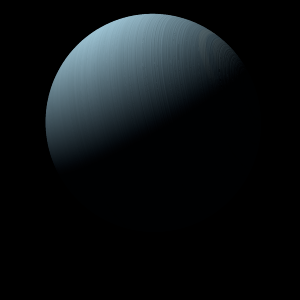|
|
Space Astro
|
Info for exoplanet "Peshizu-myo"
| Scientific (actual) data |
|---|
| Planet | WASP-71 b |
| Planet status | Confirmed |
| Planet mass | 2.258 |
| Radius | 1.5 |
| Orbital period | 2.90367 |
| Semi major axis | 0.04631 |
| Orbit eccentricity | 0 |
| Inclination | 84.2 |
| Discovered | 2012 |
| Updated | 2012-11-14 |
| Tzero tr | 2455740 |
| Log g | 3.36 |
| Publication | Published in a refereed paper |
| Detection type | Primary Transit |
| Star name | WASP-71 |
| Right ascension | 29.26° |
| Declination | 0.76° |
| Star distance | 200 |
| Star metallicity | 0.15 |
| Star mass | 1.572 |
| Star radius | 2.32 |
| Star sp type | F8 |
| Star temperature | 6050 |
| Wikipedia article | WASP-71 b |
Back
| |
| Fictional info (?) |
|---|
| Suggested name | Peshizu-myo |
| Planet type | Large hot gas giant |
| In English, Peshizu-myo is often referred to as the "brown planet" because the formaldehyde prevalent on its surface gives it a deep brown appearance that is recognizable among the astronomical bodies visible to the naked eye. Orbiting within Byaboshi's orbit, Peshizu-myo is an inferior planet and never appears to venture far from WASP-71; its maximum angular distance from WASP-71 (elongation) is 67 degrees.
For this reason, scientists often classify Peshizu-myo and Byaboshi as "large hot gas giants" to distinguish them from the other planets. It is named after the deity Peshizu-myo, the creator of love and beauty.
The planet telescopically displays the complete range of phases, similar to Venus and the Moon, as it moves in its inner orbit relative to WASP-71, which reoccurs over the so-called synodic period approximately every 116 days.
Peshizu-myo's surface appears slightly bruised and is similar in appearance to the Moon's, indicating that it has been geologically inactive for billions of years.
Peshizu-myo's surface is a dry desertscape interspersed with slab-like rocks and is periodically resurfaced by volcanism.
Peshizu-myo's dense atmosphere make observation of its surface difficult in infrared light, and the first detailed maps did not emerge until the arrival of the Magellan orbiter 70 years ago. |
| Atmosphere | Ozone | 95% |
| Formaldehyde | 3.9% |
| Oxygen | 0.0028% |
| Neon | 4.5E-5% |
| Carbonyl sulfide | 2.0E-6% |
| Water vapor | 0% |
| Atmospheric pressure | 1.7 bar |
 |
| No known satellites |
| Google search for Peshizu-myo |
|
Website by Joachim Michaelis
|
|
|
|